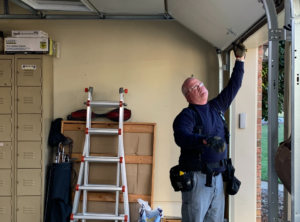Pests can be more than just an annoying nuisance; some can carry harmful bacteria that threaten your family’s health. Eco-friendly solutions offer a safer approach to protecting your home and yard.
Integrated pest management (IPM) strategies minimize reliance on chemicals and encourage natural pest regulation. Biological controls, such as introducing beneficial insects or using nematodes to target grubs, provide enduring results. Visit Our Website to learn more.

Proper pest identification is the first step in understanding your pest problem and finding the right solution. The biology of the pest and its life cycle, the environmental factors that favor it, and the procedures for monitoring, prevention and control are all more easily mapped out if the problem is identified down to species.
Even within a single family or order, different species can exhibit very different damage patterns and behavior. Getting down to a specific pest will also allow you to gather important data on how it interacts with other organisms, such as natural enemies and beneficial insects.
Incorrect pest identification is the primary cause of misguided pest management strategies that lead to poor results. This is especially true if you are using generalized products that can affect a wide range of pests. For example, products intended for controlling chrysanthemum leafminers may actually be disabling other leafminer species like Liriomyza trifolii.
Start a file of labelled digital images of the pests that you sample and refer to them often. Identifying the exact pest and knowing when it is present helps you to spot problems early, before they reach damaging levels and spread. This information can help you to develop preventative pest management strategies and reduce your reliance on toxic chemicals.
Consider partnering with a professional pest control company that is state licensed and has an Associate Certified Entomologist or Green Pro certification. The certification demonstrates that the company and its employees meet rigorous standards for environmentally safe, effective pest solutions.
If you have an indoor insect infestation, it is best to call a pest control professional to help you eradicate the problem and prevent it from returning. In many cases, however, the problem can be brought under control without the need for professional treatment. Sanitation, removing food from indoor areas, storing firewood and papers in sealed containers, vacuuming frequently, dehumidifying, sealing entry points and other management practices can significantly reduce the amount of indoor insect activity. The use of a granular insect bait can also be an option. Identifying the pest to species will also allow you to select an approved insecticide that is more targeted and less likely to cause injury to other organisms.
Pest Prevention
Although maintenance crews and property owners take care to keep buildings clean and sanitary, pest infestations can still develop. An infestation is defined as the presence of any species in a number that causes or threatens to cause property damage, adverse health consequences for building occupants, or simply poses a distracting nuisance.
A pest prevention strategy involves regularly examining a building’s exterior to identify possible points of entry for insects and rodents, and sealing those openings. In addition, keeping the inside of a building clean and minimizing clutter can help prevent pests from nesting.
Often, the best pest solutions involve a combination of preventative measures and targeted pesticide treatments. For example, implementing sanitation practices that minimize food sources for rodents and ants, sealing entrance points, and removing standing water can greatly reduce the need for pesticide applications.
However, it is also important to regularly inspect for pests and promptly respond when they are spotted. For instance, if a resident sees rodent droppings or hears them scratching in the attic, they should contact their local pest control company as soon as possible to schedule an inspection and treatment.
Rodents and other pests can transmit disease-causing pathogens through their droppings or saliva. For example, a single mouse can carry more than 30 different diseases, including hantavirus, which can cause severe respiratory failure in humans. Likewise, the bites of certain pests, such as mosquitoes and flies, can lead to dangerous infections.
In addition to implementing preventative strategies, it’s also critical to educate residents on proper pest management. This can include training them on how to properly dispose of food scraps, storing garbage in tightly closed containers, and cleaning under sinks and other storage areas. It is also important to maintain a landscape that limits pest habitats and provides adequate barriers for entry.
Some relatively low-risk pesticides, such as baits and traps, can be effective at reducing pest populations without the need for direct human exposure. However, long-term exposure to some pesticides can have serious health implications, and the risk is particularly high for children and elderly individuals. Whenever pesticides are used, they should always be applied according to the product’s label instructions and kept out of reach from children and pets.
Pest Control
Pests are unwanted organisms that damage the environment and human property. They can also be a health hazard, causing bacterial infections such as the plague, hantavirus pulmonary syndrome, leptospirosis, salmonellosis, and more. Pests can be difficult to eliminate. They often breed quickly and eat away at wood, paper, fabrics, and other structures. They can also contaminate food and water, and even cause allergic reactions in humans.
There are many different methods for pest control. Some are non-chemical, while others utilize traps, baits, or specialized pheromones. These methods are often more targeted than spray treatments, and are used to remove specific pests from the area. They may be combined with other pest management techniques, such as reducing the number of host plants by changing irrigation practices or using predators to reduce pest populations.
The best pest solutions are those that minimize harm and prevent recurrence. Prevention can include strategies such as preventing pests from entering the environment, avoiding plant diseases that can harm desirable crops, and limiting exposure to pesticides. Some pests are nearly always present, such as weeds and diseased trees. Other pests are sporadic or seasonal, such as mosquitoes and other insects. Still others are potential pests, such as invasive plants or diseases that occur under certain conditions and may become a problem in the future.
When a pest infestation occurs, it is important to determine what steps are needed to resolve the issue and whether a pest service is required. Ask if the company offers warranties on its services, and consider their return policy if your home is re-infested in between treatments.
When evaluating a pest control service, look for customer reviews on their website and in other locations. Find out what other customers have experienced, and look for certifications from reputable organizations and a commitment to safety and sustainability. Lastly, consider how they will communicate with you – do they use email, phone, or in-person meetings? A good pest control service should be transparent and willing to answer questions promptly. They should also be clear about their processes, prices, and treatment outcomes.
Pest Inspection
A pest inspection is different from a regular home inspection and is designed to look for signs of infestations. It’s a great way to avoid large and costly fixes down the line. A good inspector will catch red flags like termite damage or significant dry rot, and they’ll also examine areas of the house where pests can hide or gather, such as under furniture or in attics.
While a pest inspection may seem like an extra expense, it’s worth the money to protect your family from harmful pests. In addition to causing structural damage, some pests carry diseases that can pose health risks for you and your loved ones.
The best pest inspections are done by experienced and licensed professionals. They’re equipped to locate even the most hidden infestations with thermal imaging cameras, moisture meters, and heinemann boroscopes, among other tools. They’ll be able to provide you with detailed information about the pests found in your home, as well as suggest next steps.
Before the inspector arrives, it’s important to clear out clutter and storage. This will make it easier to access attics, basements, closets, and utility rooms. It will also make it easier for them to spot evidence of pests, such as droppings or gnawing marks. It’s also helpful to clear away anything that might be blocking the inspector’s view, such as stacked boxes or furniture.
If you’re a seller, a pest inspection is a good idea prior to putting your home on the market. This can boost buyer confidence and help you sell your home faster. It’s up to you and your agent to decide who will pay for the inspection, but it’s a great way to ensure buyers are confident in their purchase.
If you’re a new homeowner, having a pest inspection before you move in is essential. This will give you peace of mind and allow you to take action immediately if pests are present. It’s also a great idea to have a pest inspection on a regular basis, especially if you live in an area with high humidity or temperatures that are conducive to pests.








